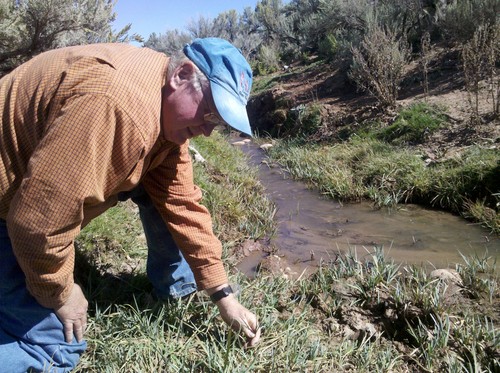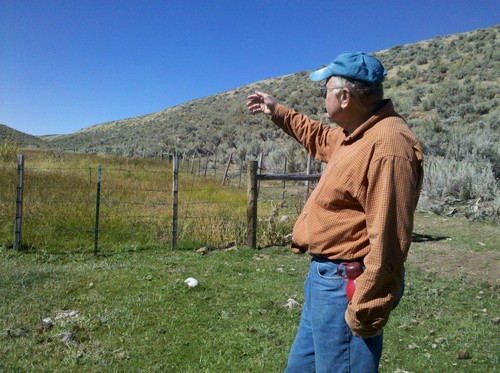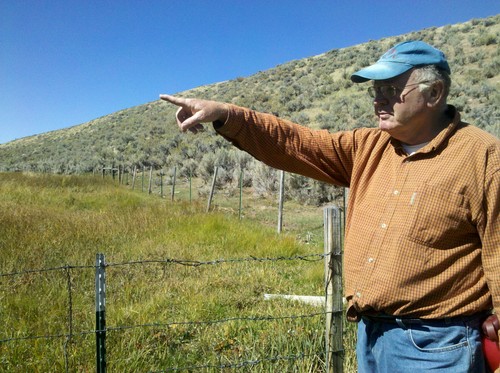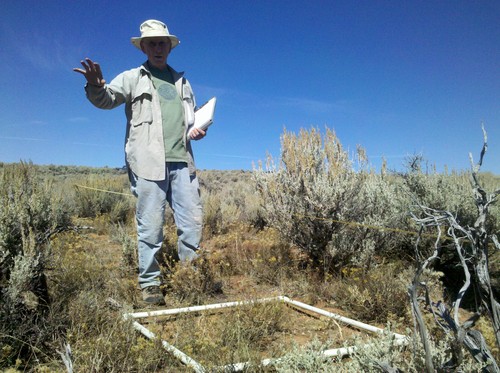This is an archived article that was published on sltrib.com in 2013, and information in the article may be outdated. It is provided only for personal research purposes and may not be reprinted.
A scathing decision by an administrative law judge has concluded the Bureau of Land Management underreports impacts of grazing leases on Rich County's 25,000-acre Duck Creek allotment.
If the ruling's reasoning is applied broadly, it could change the way BLM manages grazing on its holdings across the arid West, according to Jim Catlin of Wild Utah Project.
"Sound ranching is part of what we need to have local food and sustainable communities," Catlin said. "Degraded habitat places at risk your agricultural community as well as your wildlife community."
The 140-page opinion by Judge James Heffernan, released last month, said the BLM ignored inconvenient data and contrarian views in its environmental assessment of the Duck Creek project, intended to be a showcase for public-lands grazing.
Also, the BLM's grazing-management practices could violate the agency's own range-health standards and put sage grouse habitat at risk, according to the ruling that remands the project back to the BLM to revise it in accordance with Heffernan's findings. He released his decision after fielding the longest appeals hearing in the history of the Taylor Grazing Act. The transcript exceeds 15,000 pages and Catlin himself spent 200 hours on the witness stand.
Utah BLM officials say their 2009 decision, which Heffernan reversed, put in place a four-pasture rotation system, exclosures and upland water troughs to keep cattle out of riparian areas, extensive monitoring and other innovations that are not ordinarily required.
"We went above and beyond the regulations to provide a thoughtful grazing management system," said Kevin Oliver, BLM's West Desert district manager. "By this decision it could possibly result in less required monitoring."
BLM is considering appealing the decision to the Interior Board of Land Appeals and has until June 17 to file, according to Oliver.
The Duck Creek allotment, located southeast of Bear Lake, combines federal, private and state land. Catlin and Western Watersheds Project's John Carter, both doctorate-holding land-use scientists, designed and implemented a study that found grazing left a much deeper footprint than the BLM's range scientists reported.
"We continue to provide our monitoring to BLM and they continue to refuse to use it, going on as if no degradation is occurring on the land, while streams and springs are being lost and plant production declines," said Carter, who now manages the Yellowstone to Uintas Connection. "We have ... shown the grazing system and water troughs have not reduced use in the stream areas and have accelerated degradation and erosion in the uplands."
Heffernan reviewed Catlin and Carter's data gathered between 2005 and 2008 from numerous sites. He found their findings convincing, while BLM's range-monitoring practices seemed subjective and unreliable. "At the vast majority of their monitoring sites BLM eyeballed their key forage species and then noted their visual estimates on their field data sheets," the judge wrote.
Catlin and Carter's "paired-plot" methodology, on the other hand, entailed clipping and weighing the various forage plants in both upland and riparian test plots. The study compared the amount of vegetation left in plots that had been grazed against those that had been caged to keep cows off them.
Catlin said the BLM's procedure provides no information about the relative amounts of the various grass and forb species that were eaten.
"It will not help you identify the loss of productivity of a site, which is an important thing that affects stocking level," he testified. Under BLM guidelines, grazers should not consume more than 50 percent of the forage in a single season. Grazing pressure that exceeds this threshold degrades the plants' root structure and puts the range on a course of steady decline.
Where BLM often found "utilization," that is the amount of forage consumed over the course of a season, within acceptable ranges, Catlin and Carter found far more than 50 percent of the grasses and forbs were taken. In riparian areas, the herbaceous vegetation was completely razed, proof that BLM's methods for keep cows out of streams are failing, Catlin said.









